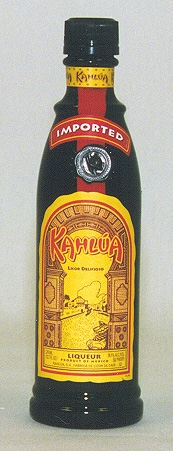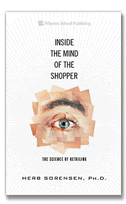In the Broadway musical "My Fair Lady," Eliza Doolittle has some complaints against her suitor, Freddy Eynsford-Hill:
Words! Words! I'm so sick of words!
- - - - -
Don't waste my time, Show me!
Don't talk at all! Show me!
- - - - -Say one more word and I'll scream!
Please don't "expl'ine," Show me! Show me!
- - - - -Show me now!
Strolling through the aisles of a supermarket, one might get the impression that Freddy is a guru to the CMOs (Chief Marketing Officers) of both retailers and their suppliers. Indeed, words, words, words! Everyone in marketing seems to think that words are the best way to communicate.with shoppers. So, here we have a milieu, rife with at least a couple million words, and a marketing machine whose prime concern is what words to use for POS communication, whether of packaging - the number one POS communication - or a free-standing display, end-aisle display, or maybe one of the advanced digital variety. Not to make too fine a point of it, but here is what you are up against in trying to communicate at retail:
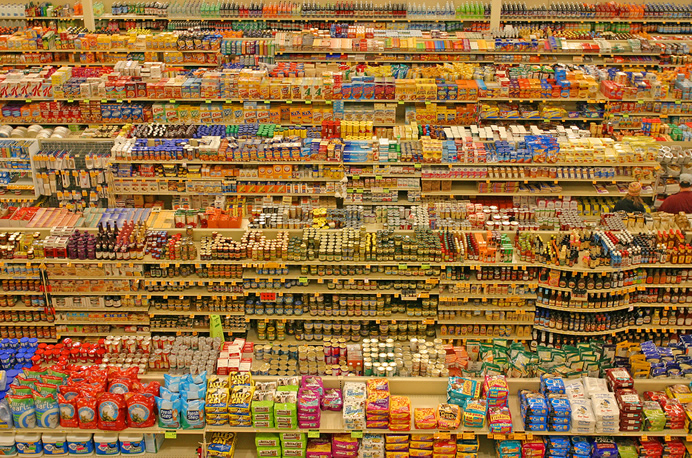
Clutter is an understatement, and words are seriously swamped in this environment. Instead, colors and shapes drive shopper recognition and communication. It is less about cognition and rationality and more about intuition and emotion.
My esteemed colleague, Siemon Scamell-Katz of TNS Magasin explains:
We have always relied on words to help us sell in the belief that creative wordsmithing is influential. But it is not. The average grocery shopper reads only around 9 [texts] in a 20 minute shop. Our eye tracking research shows us that we rely far more, not only on the visual color and shape cues to recognise the products that we normally buy, but also on the color and shape cues that we have learned signify the retailer’s promotions to trigger a promotional selection.
In a study some time ago, Andersen Consulting looked at the contents of shoppers’ carts as they left the stores that they had been shopping. Over 50% of the products that were purchased on promotion, the shopper had not realised were promoted.
Maybe, as we study the real behaviour of shoppers, rather than listening too much to what they think that they do, we will rely less on myth-based shopper marketing techniques and more on fact-based design.
For example, concerning shape, which of the following silhouettes are of the liqueur, Kahlua?
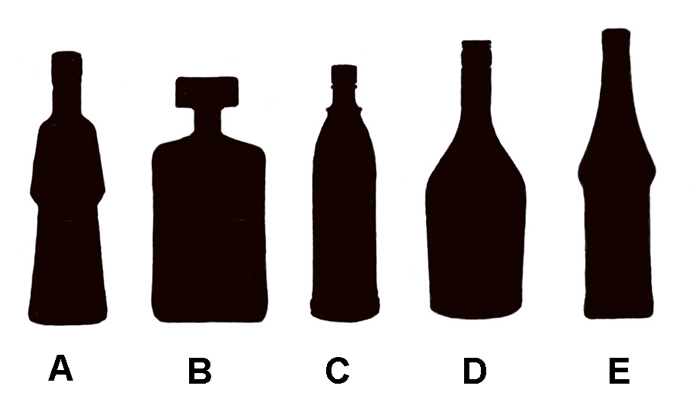
And how about the shape of the label on the Kahlua bottle? Which is the Kahlua label?
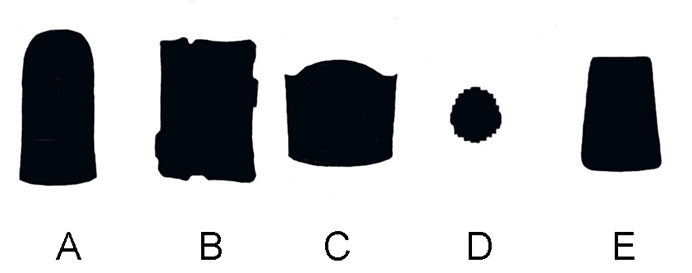
You can check a photo at the bottom of this Views, but even people who might never use Kahlua are likely to recognize the correct profile and label as C and A respectively.
The point of all this is that real communication in the store may very well be devoid of words. The Kahlua example simply illustrates how, through long exposure and association of particular shapes with a brand, shoppers can come to recognize the brand intuitively from its shape. The same is true for color, where Coke is associated with red and Pepsi is associated with blue, as examples.
Before we look at some other product examples, let's look at the larger issue of whole areas of the store, which can be styled/restyled in what we refer to as category reinvention. Here's some examples:

Both of these category reinventions evoke distinct emotional experiences tied to something less mundane than the typical supermarket. On the left, the shopper is nudged into the framework of a butcher shop while on the right the mind-set of the coffee house is sought. These are good examples of the use of something more than words to convey the message and experience appropriate to the category.
Obviously, product labels will have words, but the spirit of the category reinvention and the examples of the brands cited can be carried through with brand and item reinventions:
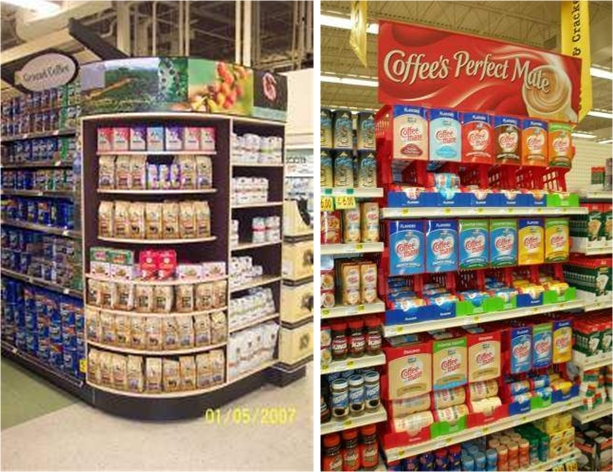
As noted in an earlier Views, purchase decisions are multidimensional, and words are a weak tool, alone, in communicating with shoppers. Colors, shapes and iconic images are powerful, and can contribute to an experiential sale, as distinguished from the more limited verbal sale. And here's your Kahlua:
